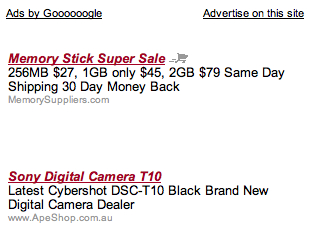Google Starts AdSense Referral Program Beta
Google has announced the beta of a new AdSense referral program. They have announcements for the beta test from both the publisher and advertiser side of things.
The program allows advertisers to offer publishers a pay-per-action model. This is more like an affiliate program, publishers only get paid when a visitor you refer actually takes some action such as signing up for a newsletter or purchasing a product.
This program takes Google a step beyond what their competition, like YPN and MSN adCenter is doing, and puts them in direct competition with companies like Commission Junction. It will be interesting to see how the competition reacts.
Right now it looks like publisher need to select individual ads to be displayed on their site. I would guess that at some point Google will combine the contextual aspect of their AdSense ads with the referral program and allow ads to be automatically selected for publishers. This is the approach that companies like Turn.com and AuctionAds are taking. Update: I found out Google does allow you to select a keyword, and Google will automatically rotate through a variety of ads for that keyword.
You can sign up for the beta as a publisher, or as an advertiser. I have signed-up. If I get accepted and find out more details, I’ll be sure to let you know.



